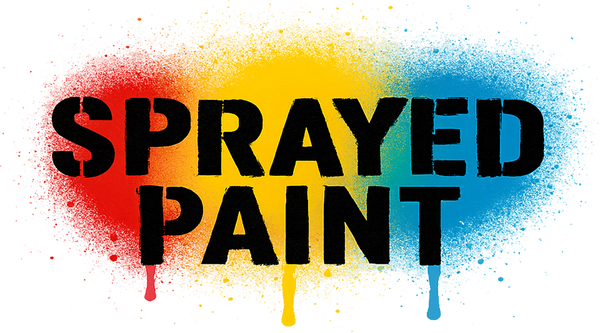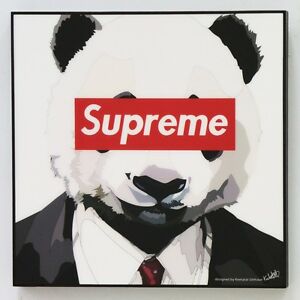
Supreme
-
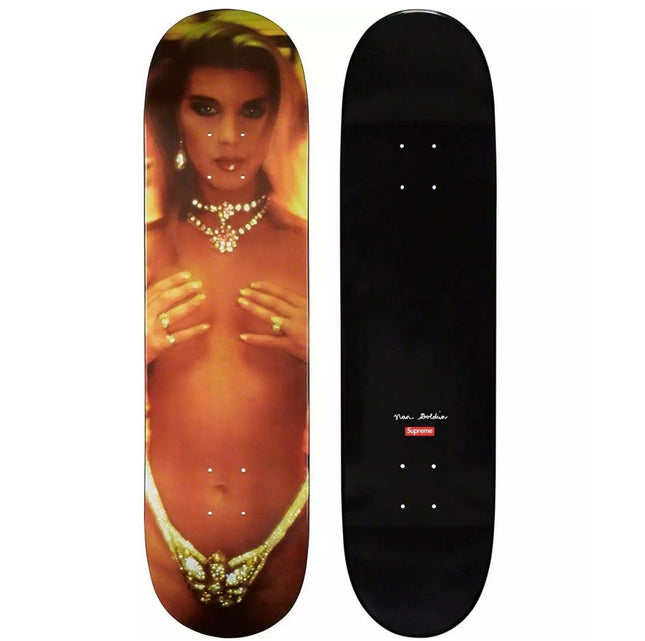
Supreme Nan Goldin Kim In Rhinestones Skateboard Art Deck by Supreme
Supreme Nan Goldin Kim Deck In Rhinestones Limited Edition Skateboard deck art by Designer Brand Supreme SS18 2018 As part of their Spring/Summer 2018 collection, Supreme worked with renowned American photographer Nan Goldin for a collaboration. These skate decks featured Goldin's classic photography. This particular deck, titled "Kim in Rhinestones" showcases Goldin's signature portrait style photography with vibrant colors and details.
$233.00
-
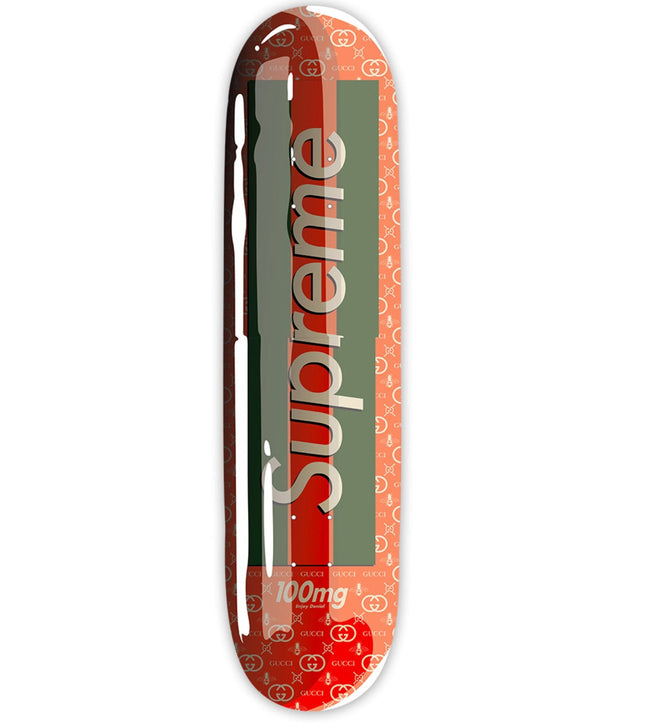
Denial- Daniel Bombardier Supreme Gucci Smashup Pill Inverse Skateboard Deck by Denial- Daniel Bombardier
Supreme Gucci Smashup Pill- Inverse Fine Art Limited Edition Archival Pigment Print Transfer on Cold Pressed Steep Natural Skateboard Deck by Street Artwork Graffiti Artist Denial- Daniel Bombardier. 2022 Numbered Limited Edition of 50 Skateboard Artwork Size 8.25x32 Archival Pigment Print Transfer on Cold Pressed Steep Natural Skate Deck Size: 8.25 x 31.875 Inches Release: June 28, 2022 From the Gucci logo, Louis Vuitton & Supreme to Channel perfumes and credit cards, he is utilizing such cultural products with the intention to make a statement against the system, which gave birth to them. As a result, he re-contextualizes them and transforms them from commercial products to his cultural legacy.
$613.00
-
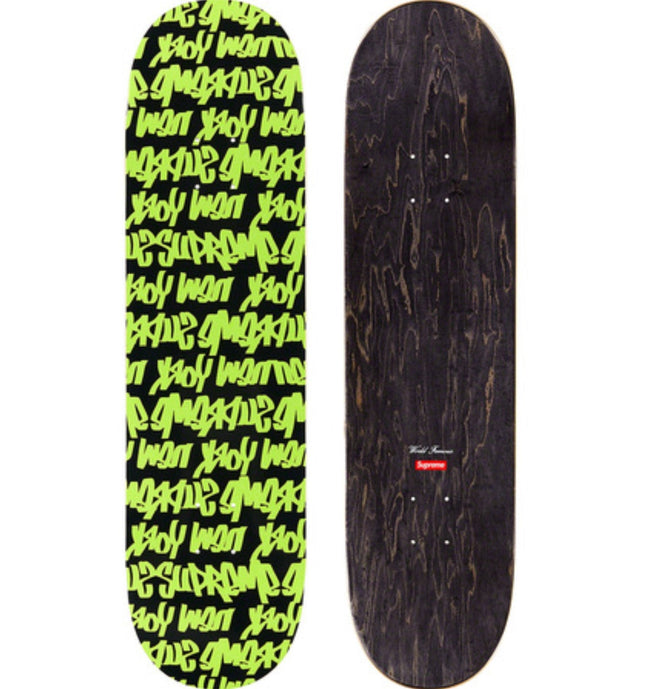
Supreme Fat Tip Black Skateboard Art Deck by Supreme
Fat Tip Deck- Black Limited Edition Skateboard deck art by Designer Brand Supreme FW22 2022 Supreme skate deck with natural veneer and blacktop ply. Printed logo pattern on bottom with printed World Famous and box logo on top.
$233.00
-
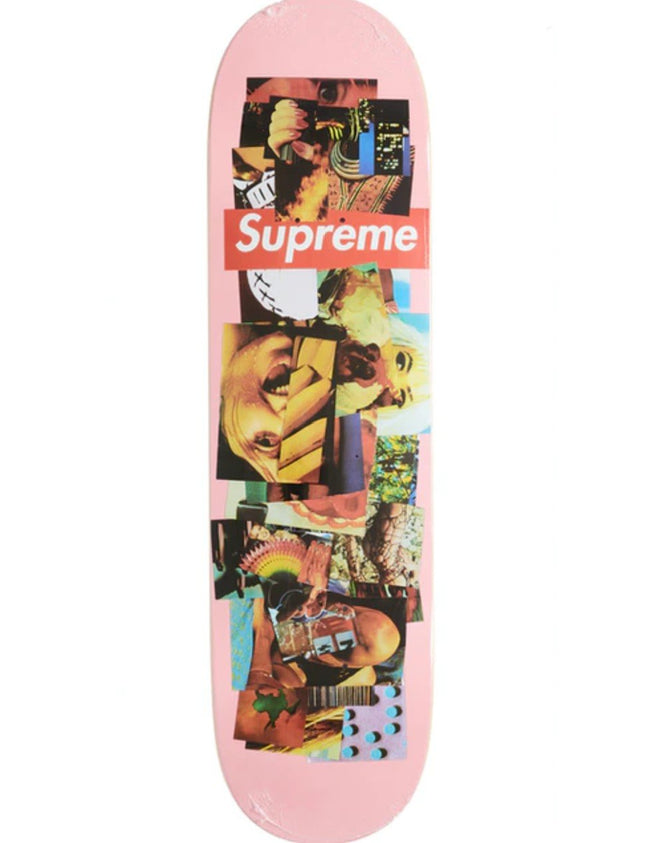
Supreme Stack Pink Skateboard Art Deck by Supreme
Stack- Pink Deck Fine Art Limited Edition Archival Pigment Print Transfer on Cold Pressed Steep Natural Skateboard Deck by Street Artwork Graffiti Artist Supremex Weirdo Dave. Weirdo Dave has designed an piece of artwork for Supremes Stack Skateboard Decks. The decks were released in yellow, black, and pink colorways, and were part of Supremes F/W 2021 week one debut. The yellow Skate Deck is covered with collage style artwork that features abstract photos along with a horizontal Supreme box logo going across the middle of the Skateboard Deck. The Supreme Stack Skateboard Deck (Yellow) released August 21, 2021
$206.00
-
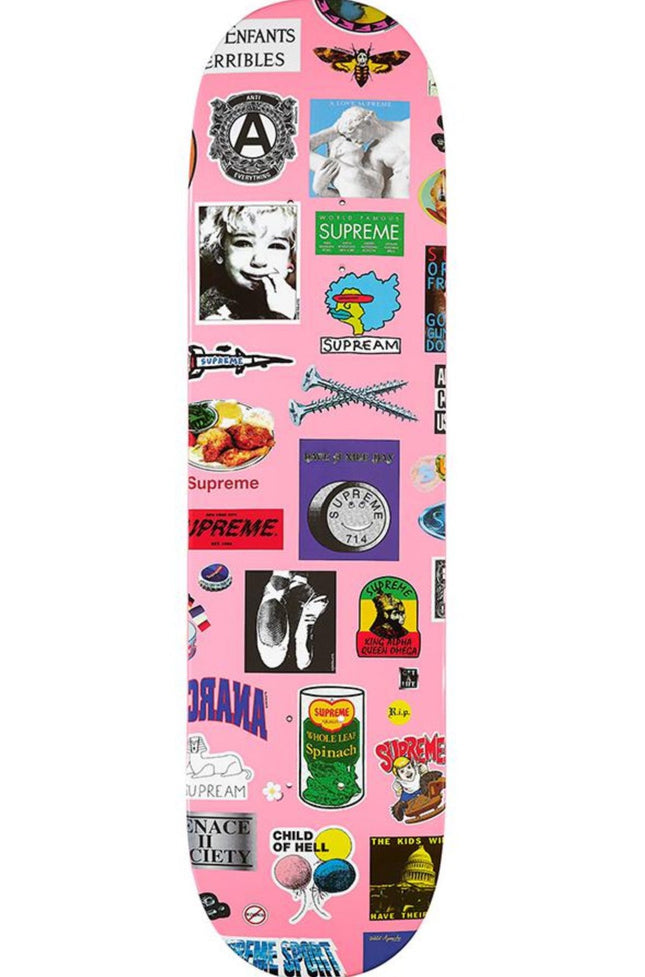
Supreme Stickers Pink Skateboard Art Deck by Supreme
Stickers- Pink Deck Fine Art Limited Edition Archival Pigment Print Transfer on Cold Pressed Steep Natural Skateboard Deck by Street Artwork Graffiti Artist Supreme. 2021 Limited Edition
$198.00
-
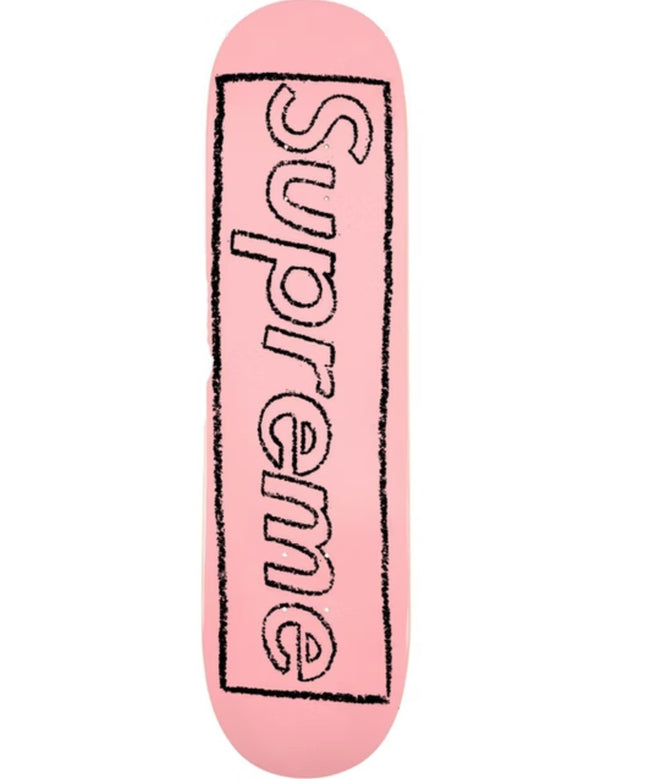
Kaws- Brian Donnelly Supreme KAWS Chalk Logo Deck- Pink Skateboard by Kaws- Brian Donnelly
Supreme KAWS Chalk Logo Deck- Pink Limited Edition Skateboard Deck art by Designer Brand Supreme. SS21 2021- The Supreme KAWS Chalk Logo Skateboard Deck Red showcases the classic KAWS box logo, as seen in his prior collaboration with Supreme. The logo spans the entire deck width and was released on February 18th, 2021, Supreme's Spring/Summer 2021 season. The Fusion of Skate Culture and Art in Supreme KAWS Chalk Logo Deck The Supreme KAWS Chalk Logo Deck in pink represents a striking example of the fusion between street culture and contemporary art, showcasing the iconic collaboration between Supreme, a brand at the forefront of streetwear, and KAWS, an artist renowned for his influence in street pop art and graffiti artwork. This particular skateboard deck, released as part of Supreme's Spring/Summer 2021 collection on February 18th, 2021, exemplifies the intersection of functionality and artistry that has become a hallmark of both entities. The deck features the classic KAWS box logo, a symbol transcending its origins to become an emblem within the street art community. The logo asserts its presence by spanning the entire width of the deck, turning an ordinary skateboard into a canvas for artistic expression. The color pink adds a vibrant contrast to the stark black lines of the chalk logo, playing with notions of street art's traditionally gritty aesthetic by introducing a playful and visually striking hue. Street Pop Art & Graffiti Artwork: Supreme and KAWS Collaboration This collaboration is not merely a commercial venture but a cultural statement reflecting the dynamics of street pop art. Street pop art is characterized by incorporating elements from popular culture into art that is often accessible in public spaces. The Supreme KAWS Chalk Logo Deck is a product found in the streets, at skate parks, or displayed as a piece of art, embodying the core principles of street pop art by dismantling the barriers between 'high' art and everyday objects. The limited edition nature of the deck, set against the backdrop of the SS21 season, speaks to the temporality and exclusivity often played with in street art and fashion. This skateboard deck art piece captures the spirit of its time, resonating with the youthful exuberance and rebellious energy of skate culture while also serving as a collectible item that holds value in terms of its design and cultural significance. Through this artistic endeavor, Supreme and KAWS highlight the potential of streetwear items to serve as mediums for critical engagement and artistic discourse. The skateboard deck becomes a vehicle for challenging traditional notions of what constitutes art and who art is for, making a statement accessible to a diverse audience. Using pink in this context is particularly impactful, challenging gender norms and expectations within skateboarding and street culture. The Supreme KAWS Chalk Logo Deck in pink is not just a skateboard; it is a piece of street pop art that captures the essence of its era. It is a testament to the power of collaboration between streetwear brands and artists and the continued relevance of street pop art and graffiti artwork in shaping the cultural landscape.
$244.00
-
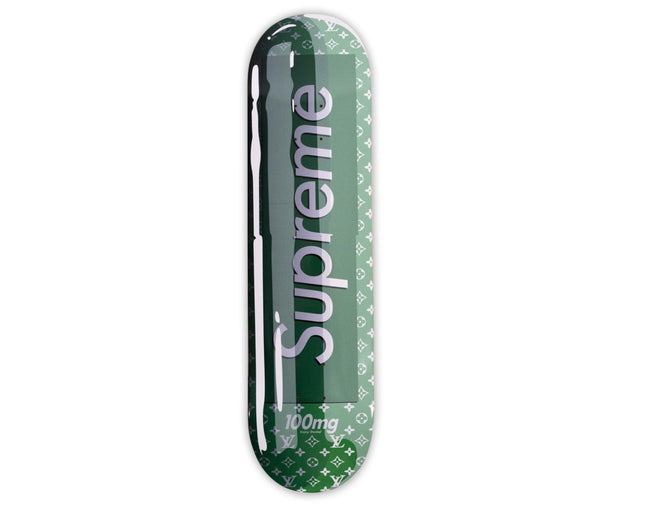
Denial- Daniel Bombardier Supreme Vuitton Smashup Pill Green Skateboard Deck by Denial- Daniel Bombardier
Supreme Vuitton Smashup Pill- Green Deck Fine Art Limited Edition Archival Pigment Print Transfer on Cold Pressed Steep Natural Skateboard Deck by Street Artwork Graffiti Artist Denial. 2022 Numbered Limited Edition of 50 Skateboard Artwork Size 8.25x31.87 Naturally, the artist has evolved as one the most prominent figures of contemporary pop artists, who nonetheless, continues to stay relevant and is interested in generating thought-provoking commentary. He has a long history of exploring the boundaries of appropriation, which he uses as a means of subverting the value of cultural products, imprinted in the collective memory of the Western civilization. His work, in other words, is inviting the viewer to re-imagine our dystopian society as a way of confronting it, with humor and irony as the biggest tools of the artist.
$590.00
-
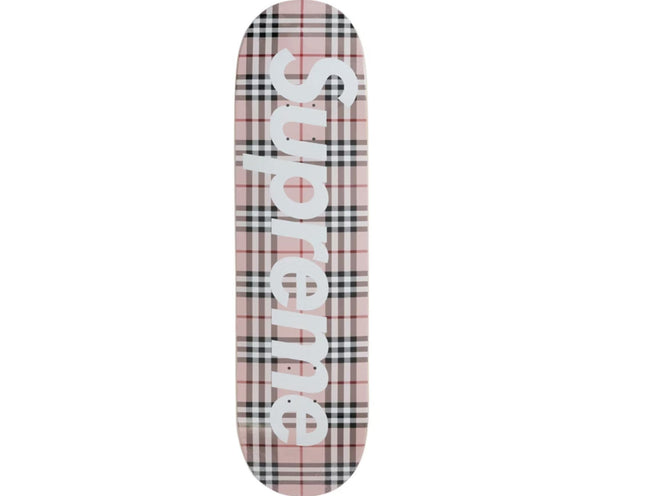
Supreme Burberry Pink Skateboard Art Deck by Supreme
Supreme Burberry Skateboard Deck- Pink Limited Edition Skateboard deck art by Designer Brand Supreme x Burberry SS22 2022 In March of 2022, Supreme linked up with fashion house Burberry for a highly-anticipated collaboration. The collection included dozens of hot items like box logo tees and hoodies. Among the most sought-after items were was this Supreme Burberry Skateboard Deck Beige, which features the iconic Burberry plaid pattern on a classic Supreme box logo skateboard. Goes without saying, but this skate deck sold out in an instant during the drop and has since become a coveted collector's item. The Supreme Burberry Skateboard Deck Beige was released on March 10th, 2022
$359.00
-
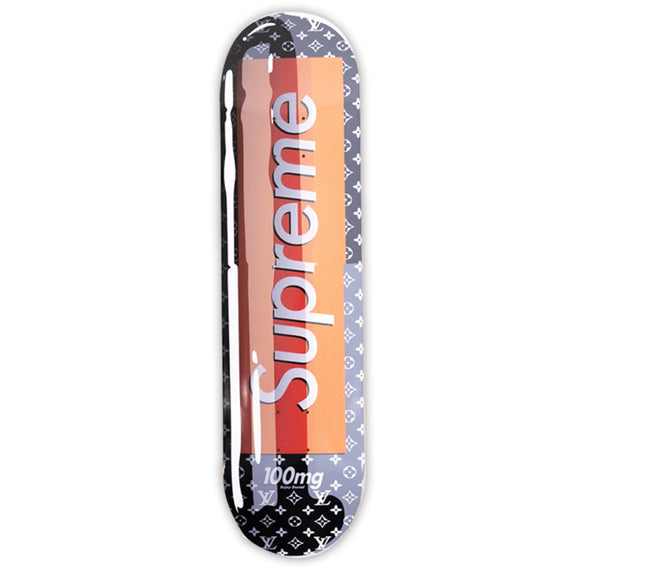
Denial- Daniel Bombardier Supreme Vuitton Smashup Pill Black Skateboard Deck by Denial- Daniel Bombardier
Supreme Vuitton Smashup Pill- Black Deck Fine Art Limited Edition Archival Pigment Print Transfer on Cold Pressed Steep Natural Skateboard Deck by Street Artwork Graffiti Artist Denial. 2022 Numbered Limited Edition of 100 Skateboard Artwork Size 8.25x31.87 Naturally, the artist has evolved as one the most prominent figures of contemporary pop artists, who nonetheless, continues to stay relevant and is interested in generating thought-provoking commentary. He has a long history of exploring the boundaries of appropriation, which he uses as a means of subverting the value of cultural products, imprinted in the collective memory of the Western civilization. His work, in other words, is inviting the viewer to re-imagine our dystopian society as a way of confronting it, with humor and irony as the biggest tools of the artist.
$466.00
-
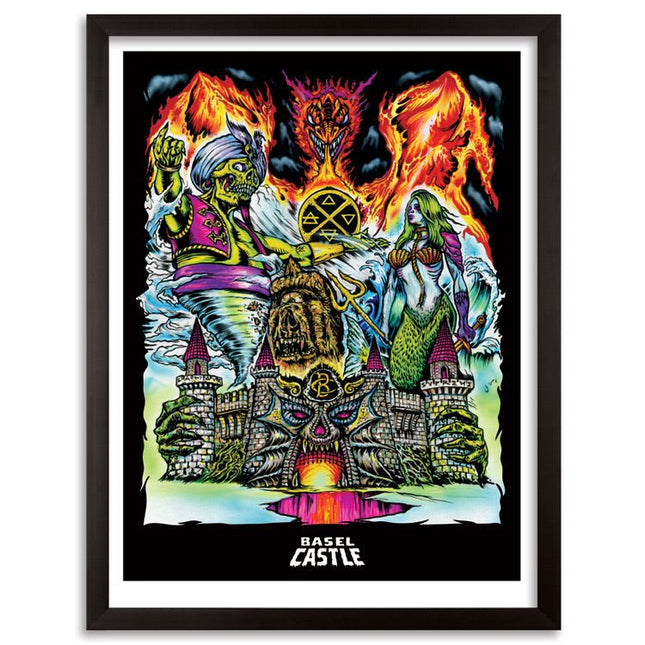
L'Amour Supreme Basel Castle 2013 Archival Print by L'Amour Supreme
Basel Castle 2013 Limited Edition Archival Pigment Prints on 310gsm Fine Art Paper by L'Amour Supreme Graffiti Street Artist Modern Pop Art. Basel Castle, produced by the Overthrow Collective in association with Embrace and ABV, is an art-centric festival combining some of the worlds most influential contemporary artists & musicians, with uniquely interactive games, installations, exhibitions, and live performances. "The name L'Amour Supreme came about from me being such a big fan of Coltrane and his album, A Love Supreme. Supposedly he had this spiritual awakening while recording it. Not in the traditional Christian or Islamic sense, but more of an overall revelation of the connectedness of all beings. I definitely feel that listening to his music and thats something I wanted people to feel when they view my art." - L'Amour Supreme
$217.00
-
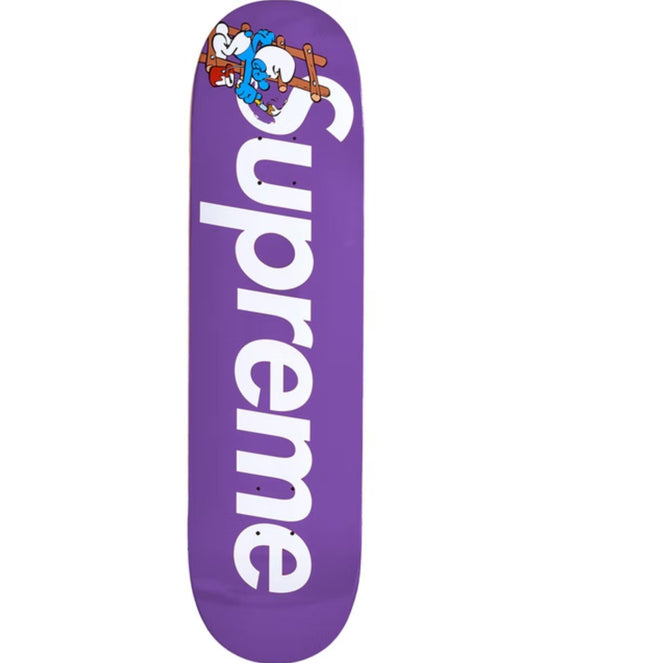
Supreme Smurfs Purple Skateboard Art Deck by Supreme
Supreme Smurfs Deck- Purple Limited Edition Skateboard deck art by Designer Brand Supreme Supreme's highly anticipated Smurfs collaboration dropped during week 6 of the brand's Fall/Winter 2020 season. The Supreme Smurfs Skateboard Deck on October 1st, 2020. This box logo skateboard deck may go down in history as one of the most desirable and features classic Smurfs imagery alongside Supreme's iconic logo.
$359.00
-
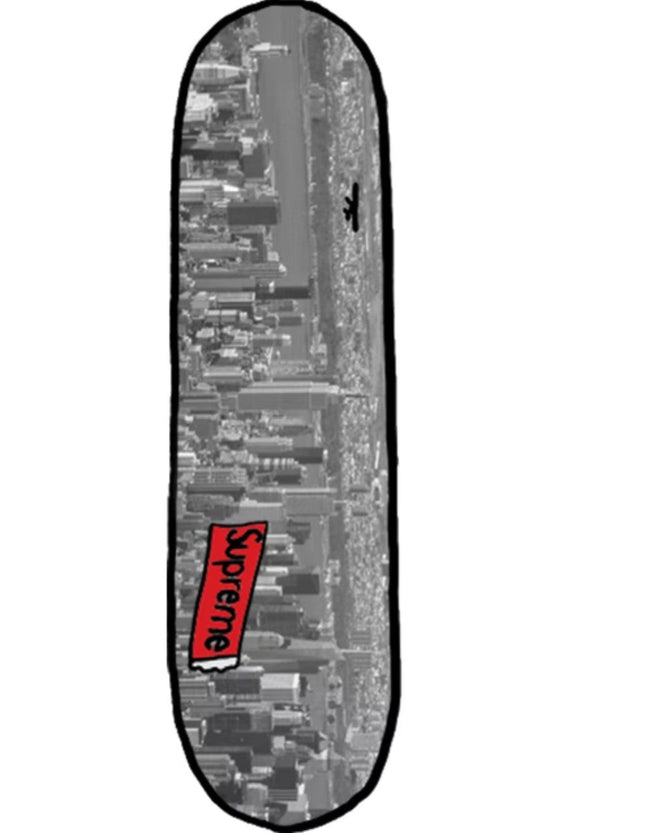
Supreme Aerial Skateboard Art Deck by Supreme
Supreme Aerial Deck Limited Edition Skateboard deck art by Designer Brand Supreme For week 12 of their Fall/Winter 2020 season, Supreme released this Aerial Skateboard. The Supreme Aerial Skateboard depicts a Supreme banner flying through the sky with the New York skyline in the background, as shown in one of the brand's promotional videos. This skateboard deck was released on November 12th, 2020.
$249.00
-
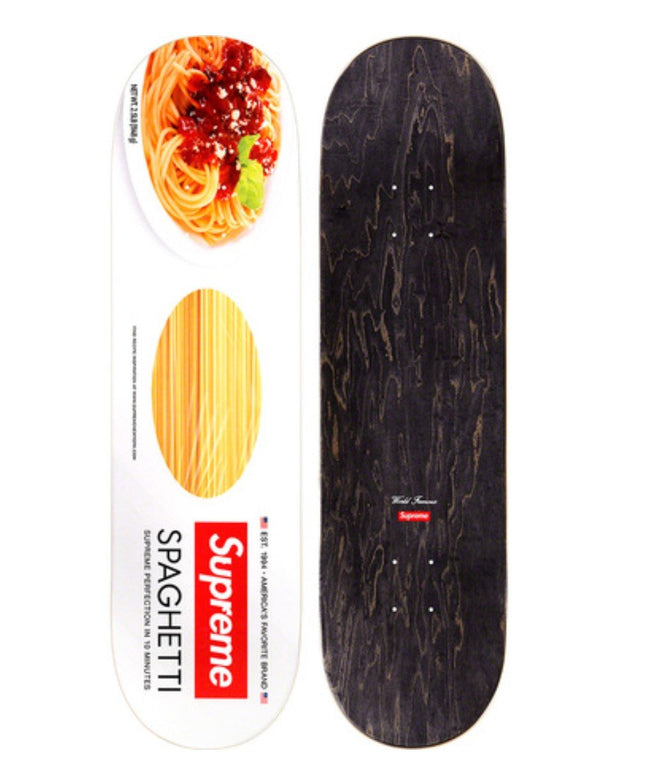
Supreme Spaghetti Skateboard White Skateboard Art Deck by Supreme
Spaghetti Skateboard- White Deck Fine Art Limited Edition Archival Pigment Print Transfer on Natural Veneer Wood Skateboard Deck by Street Artwork Graffiti Artists at Supreme. 2021 Spaghetti Skateboard- White 8.375" x 32.125" Supreme skate deck with natural veneer and black top ply. Printed graphic on the bottom with printed World Famous and box logo on top.
$206.00
-
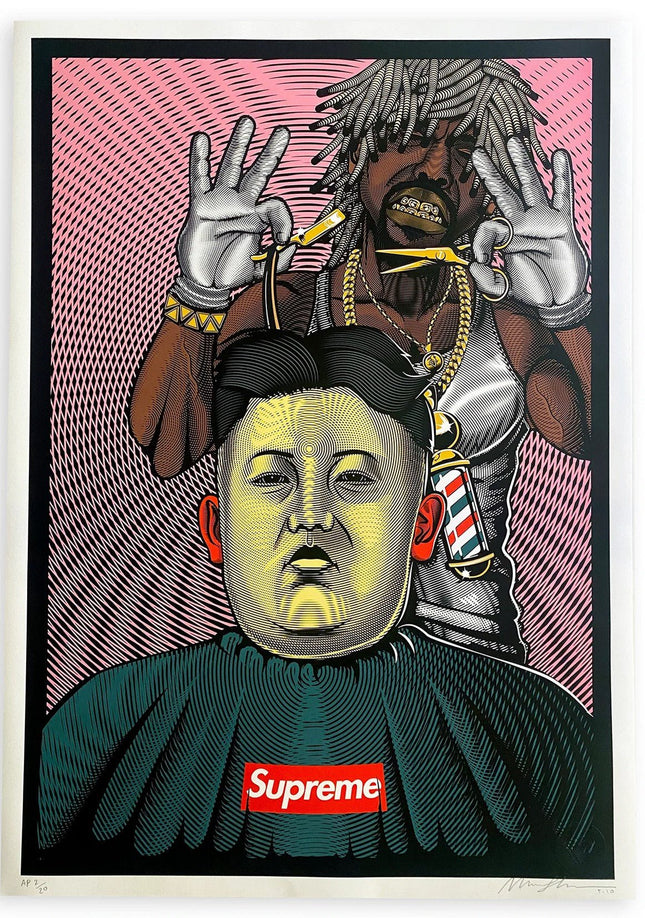
Marwan Shahin Kim Jong’s Supreme Barber AP Giclee Print by Marwan Shahin
Kim Jong’s Supreme Barber AP Artwork Giclee Limited Edition Print on Photographique Rag Paper by Pop Culture Graffiti Artist Marwan Shahin. AP Artist Proof Marwan Shahin's "Kim Jong’s Supreme Barber" an iconic standout from Black Pop series, Debuting in 2015, Releasing 20 Artist Proof Prints from the archives and produced by Shahin Studios Only 20 Available, "Kim Jong’s Supreme Barber” 2015 20 inches x 27 inches Giclée on Photographique Rag Signed, Numbered, Embossed and Branded Kim Jong’s Supreme Barber by Marwan Shahin – Black Pop Satire at Full Clip Kim Jong’s Supreme Barber is one of the most provocative and visually arresting works from Marwan Shahin’s Black Pop series. Released in 2015 and issued as a limited Artist Proof edition of just 20 prints, this 20 x 27 inch giclée on Photographique Rag paper represents Shahin’s signature blend of satire, symbolism, and street pop art with razor-sharp cultural critique. Signed, embossed, and branded by the artist, the piece reflects the fusion of authoritarian iconography and global consumerism, delivered through the lens of contemporary graffiti artwork. At the center of the artwork is a hyper-stylized depiction of Kim Jong-un seated at a barbershop, his face rendered in yellow and marked by concentric linework that reflects the hypnotic style common across Shahin’s visual lexicon. Draped in a barber’s gown stamped with the bold red Supreme logo, the North Korean leader becomes the unsuspecting subject of transformation. Hovering behind him is a heavily stylized barber with dreadlocks, grills, tattoos, gold jewelry, and a gleaming pair of clippers. His expressive gestures, confident stance, and the dangling barbershop pole clipped to his chain inject this piece with a swagger that contrasts sharply with the rigid, emotionless stare of his client. Global Irony Woven into Detail What makes Kim Jong’s Supreme Barber stand out in the canon of street pop art is its layered messaging. The juxtaposition of Supreme, a global streetwear empire rooted in Western counterculture, with one of the most globally criticized authoritarian figures, comments on the absurdity and irony of modern icon-making. The barber, portrayed as a stereotypical symbol of hip-hop culture and Black excellence, takes the role of power-shifter, reshaping the dictator’s image in a visual reversal of societal roles. The piece subtly flips the dynamics of influence and agency in a consumer-driven world. Shahin’s careful craftsmanship appears not only in the illustrative precision of the linework, but in the symbolism interwoven throughout. The Supreme logo acts as a stand-in for corporate worship. The barber’s gold accessories and confident demeanor challenge the cultural hierarchy of who shapes global style and influence. The red background pulses with movement and tension, while the flat, expressionless stare of Kim grounds the absurdity in an eerie calm. Black Pop at Its Sharpest Part of the Black Pop series, this artwork belongs to a body of work that reclaims visual narratives typically monopolized by white or Western artists and commercial institutions. Marwan Shahin, through this satirical print, addresses the power dynamics between fashion, race, media, and propaganda. His depiction of the barber as a cool, cultural force—who literally shapes the head of a dictator—speaks to the growing influence of marginalized communities over the global zeitgeist. Kim Jong’s Supreme Barber is both absurdist and profound. It dissects global politics, power, and the cult of consumerism with biting wit. As with much of Shahin’s output, it is unafraid to provoke, to reframe dominance, and to push pop culture imagery into radical, uncharted territory. For collectors and admirers of true street pop and graffiti artwork, this limited Artist Proof is a masterstroke in visual commentary and cultural subversion.
$385.00
-
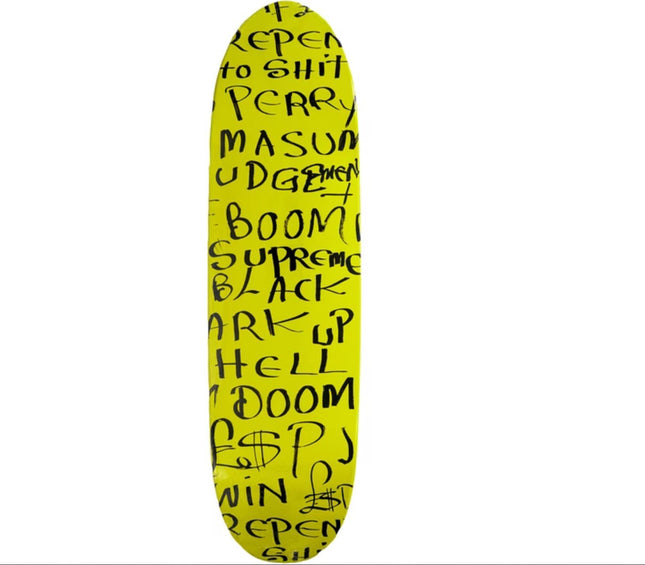
Supreme Lee Scratch Perry Black Ark Cruiser Yellow Skateboard Art Deck by Supreme
Lee Scratch Perry Black Ark Cruiser- Yellow Limited Edition Skateboard deck art by Designer Brand Supreme x Lee Scratch Perry. Supreme and Jamaican record producer Lee Scratch Perry have teamed up for another collaboration. The Supreme x Lee Scratch Perry Black Ark Cruiser Deck was released during Week 8 of the Supreme FW20 season on October 15th, 2020
$206.00
-
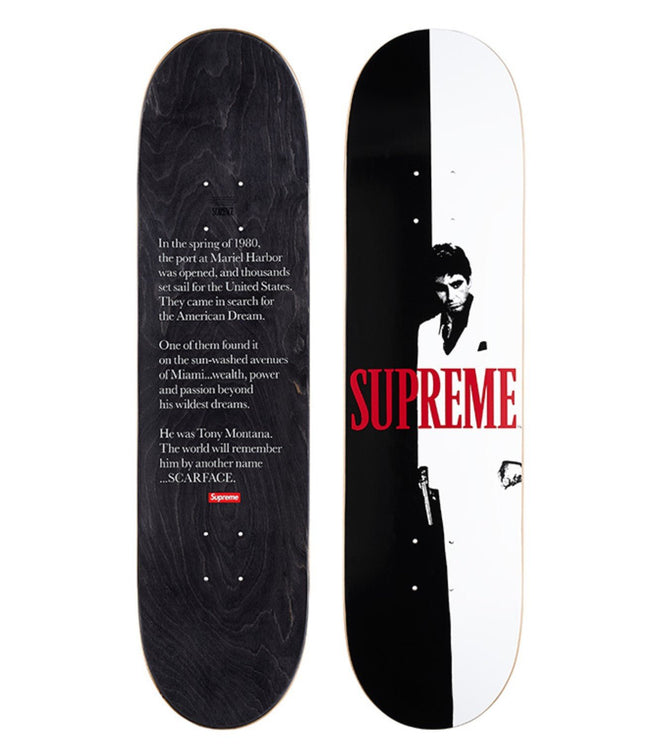
Supreme Scarface Split Skateboard Art Deck by Supreme
Supreme Scarface Split Deck Limited Edition Skateboard deck art by Designer Brand Supreme 2017 Printed Supreme x Scarface Limited Edition Skateboard Deck Depicting Al Pacino as Tony Montana from the Cult Classic Drug Movie Scarface. The Supreme Scarface Split Deck skateboard symbolizes the intersection where street culture, film, and design converge, creating a piece of Street Pop Art and graffiti Artwork that resonates with diverse audiences. This limited edition skateboard deck, released as part of the Fall/Winter 2017 collection by the designer Supreme, features iconic imagery from the cult classic drug movie "Scarface." The deck showcases a striking split design with Al Pacino as Tony Montana, capturing one of the film's most intense moments. Supreme, a brand deeply ingrained in the fabric of streetwear, has consistently demonstrated a knack for blending popular culture with its distinctive style. The collaboration with "Scarface" cements this approach, offering not just a skateboard but a canvas that reflects the gritty and raw narrative of the film. The deck is a homage to the character of Tony Montana, a figure whose pursuit of the American Dream through the darkest avenues of crime has left an indelible mark on cinema and popular culture. The "Shower" deck, in particular, grabs attention with a still from the infamous scene where a drug deal spirals into violence, placing Montana in a life-threatening standoff. This powerful image is complemented by the film's famous tagline on the top of the deck, further embedding the skateboard within the lore of "Scarface." This fusion of art, cinema, and skateboarding culture elevates the piece from a functional item to a collectible artifact within pop and street art. Supreme's decision to feature this graphic during the 2017 Fall/Winter collection was a strategic move that tapped into the nostalgia and aesthetic appeal of the 1980s, when skateboarding and the film "Scarface" rose to prominence. The deck's design captures the essence of that era while remaining relevant to the modern landscape of street art and fashion. As a piece of modern Street Pop Art and graffiti Artwork, the Supreme Scarface Split Deck transcends traditional boundaries, blending functionality with a solid artistic statement. Its creation speaks to a culture that values the defiant spirit of street art and the power of visual storytelling. For enthusiasts and collectors, the deck represents a piece of cultural history, embodying the spirit of rebellion and the relentless pursuit of ambition, themes as relevant today as they were at the time of the film's release.
$771.00
-
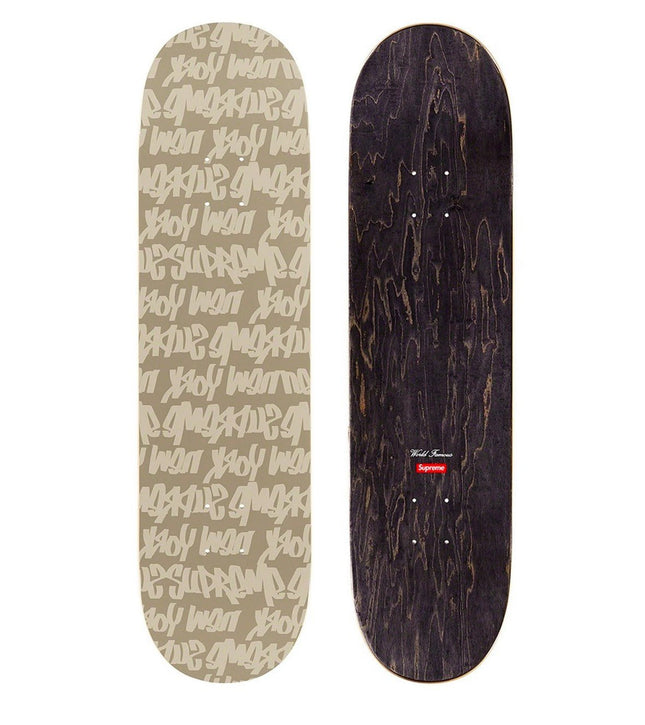
Supreme Fat Tip Tan Skateboard Art Deck by Supreme
Fat Tip Deck- Tan Limited Edition Skateboard deck art by Designer Brand Supreme FW22 2022 Supreme skate deck with natural veneer and blacktop ply. Printed logo pattern on bottom with printed World Famous and box logo on top.
$233.00
-
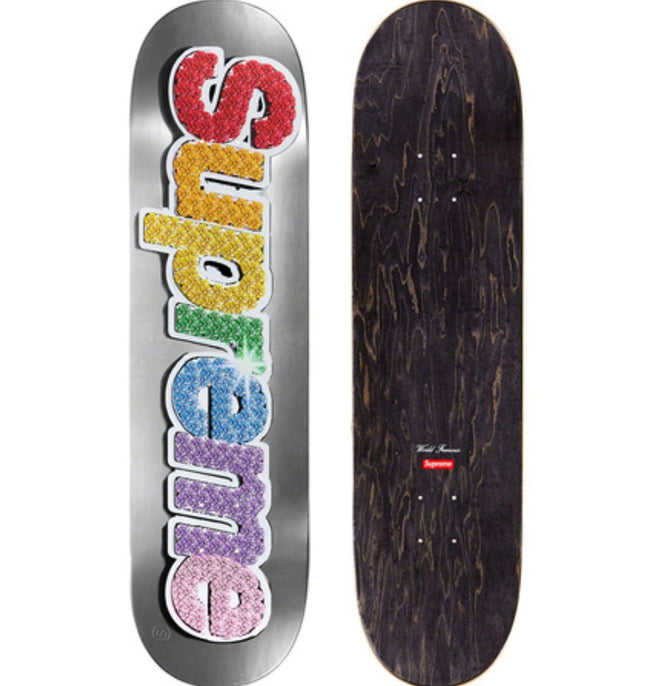
Supreme Bling Box Logo Platinum Skateboard Art Deck by Supreme
Bling Box Logo Deck- Platinum Limited Edition Skateboard deck art by Designer Brand Supreme FW22 2022 Supreme skate deck with natural veneer and black top ply. Printed logo on bottom with printed World Famous and box logo on top.
$289.00
-
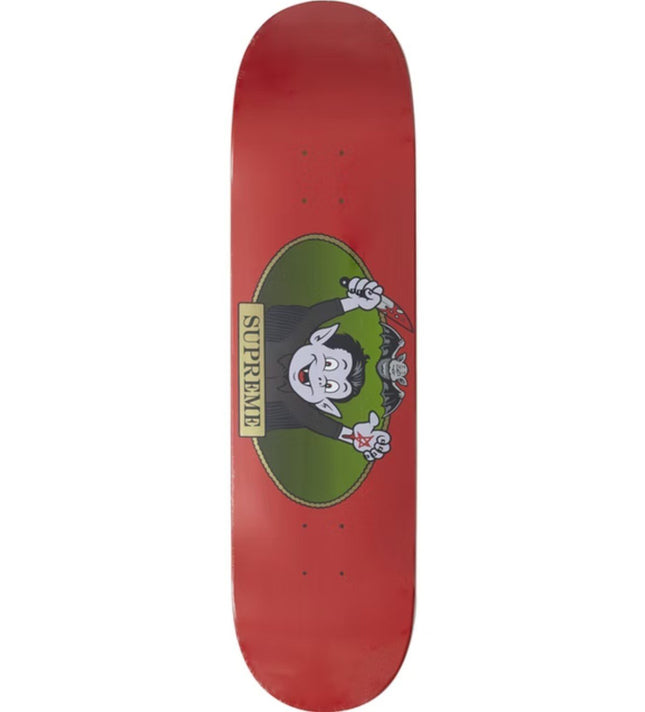
Supreme Vampire Boy Red Skateboard Art Deck by Supreme
Supreme Vampire Boy Deck- Red Limited Edition Skateboard deck art by Designer Brand Supreme SS21 2021 Supreme Dracula Bat Skateboard Deck
$206.00
-
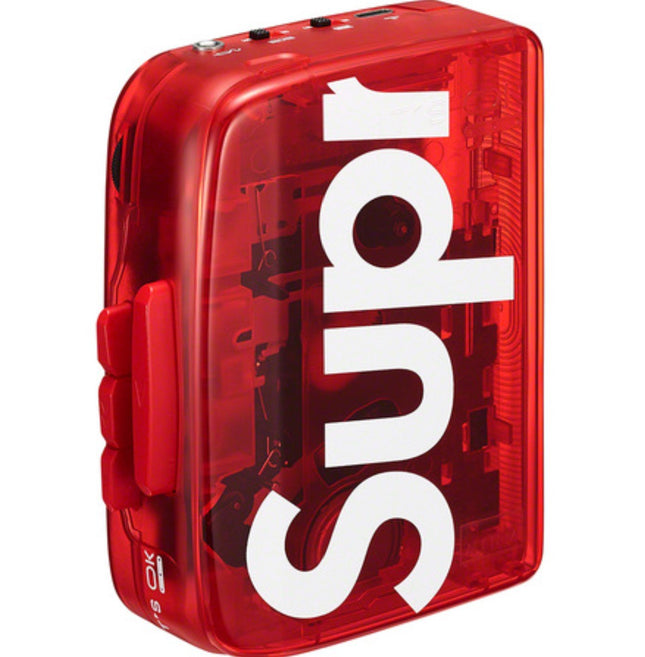
Supreme ITS OK TOO Cassette Player Red Music Art Object by Supreme
Supreme ITS OK TOO Cassette Player- Red Limited Edition Designer Art Object Collectible Artwork by Famous Fashion Artists Supreme. FW22 2022 Transparent stereo cassette player. Bluetooth 5.0-compatible with 3.5mm headphone jack. Back clip included. 4.65" x 3.31" x 1.32". Made exclusively for Supreme.
$298.00
-
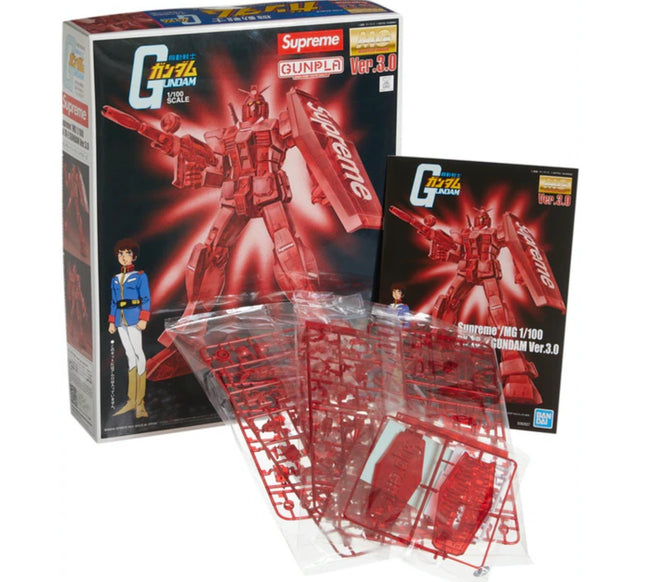
Supreme MG 1/100 RX-78-2 GUNDAM Ver. 3.0 Action Figure Art Object by Supreme
Supreme MG 1/100 RX-78-2 GUNDAM Ver. 3.0 Action Figure Limited Edition Art Toy Model Collectible Artwork by Supreme. 2021 Limited New In Box. The Supreme MG 1/100 RX-78-2 Gundam action figure is a 1/100 scale model of the famous RX-78-2 from Mobile Suit Gundam. The figure is made from recycled plastic and features a red colorway throughout the entire silhouette. The shield of the RX-78-2 features a giant Supreme logo, and the logo is also found in a smaller font on the chest and kneecaps. The Supreme MG 1/100 RX-78-2 Gundam action figure was released during the Supreme fall/winter 2021 season.
$352.00
-
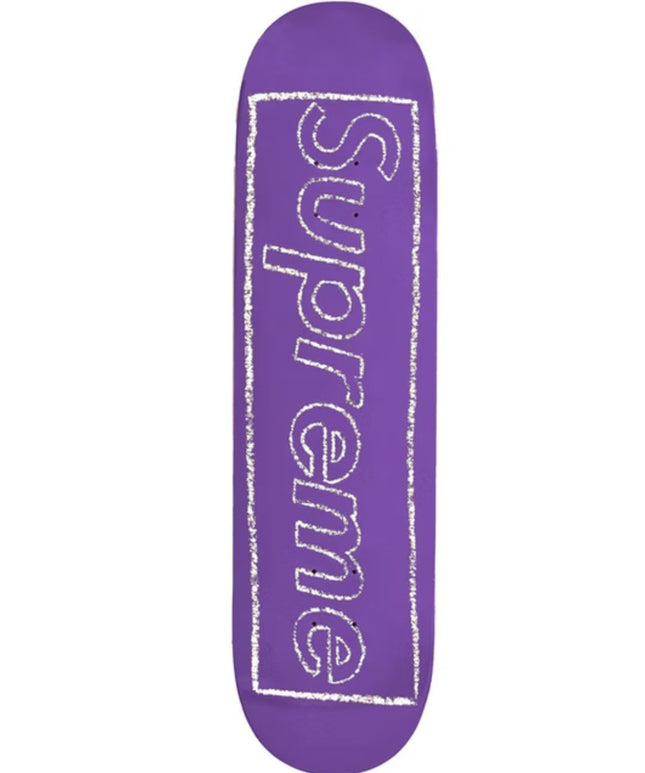
Kaws- Brian Donnelly Supreme KAWS Chalk Logo Deck- Purple Skateboard by Kaws- Brian Donnelly
Supreme KAWS Chalk Logo Deck- Purple Limited Edition Skateboard deck art by Designer Brand Supreme. SS21 2021- The Supreme KAWS Chalk Logo Skateboard Deck Red showcases the classic KAWS box logo, as seen in his prior collaboration with Supreme. The logo spans the entire deck width and was released on February 18th, 2021, Supreme's Spring/Summer 2021 season. Supreme KAWS Chalk Logo Deck: A Blend of Street and Artistic Cultures The Supreme KAWS Chalk Logo Deck in purple is a distinctive piece of street pop art that reflects the dynamic blend of skate culture and artistic expression. This limited edition skateboard deck, adorned with the classic KAWS box logo, represents a collaboration between Supreme—a brand synonymous with street culture—and KAWS, an artist whose influence extends into pop, street, and graffiti art. Released during Supreme's Spring/Summer 2021 season, the deck became available on February 18th, 2021, and immediately caught the attention of art collectors and skateboarding enthusiasts alike. The deck features the unmistakable design aesthetic of KAWS, with the logo stretching across the width of the deck, transforming an ordinary skateboard into a work of art. Purple, a color often associated with royalty and creativity, elevates the piece, infusing it with a vibrant yet enigmatic quality. The chalk-like texture of the logo adds a tactile element that harks back to the gritty origins of street art, where sidewalks and walls become canvases for expression. Supreme and KAWS: Crafting Contemporary Collectibles The partnership between Supreme and KAWS is more than just a commercial alliance; it is a cultural fusion that brings together the energy of the streets and the sophistication of fine art. Supreme's deep roots in skateboarding culture and KAWS's background in graffiti art merge in this skateboard deck, creating a product emblematic of street pop art. The piece is a testament to the power of collaboration, showcasing how two forces within different spheres can come together to create something that resonates with a diverse audience. The limited edition nature of the Supreme KAWS Chalk Logo Deck speaks to the exclusivity and collectibility that are often associated with street art. Each deck is a tangible representation of the intersection between high art and everyday life, a concept central to the street pop art movement. The piece is not just a functional object but also a statement piece, indicative of the wearer's engagement with contemporary cultural expressions. In the context of the SS21 2021 season, the release of this deck also highlights the ongoing dialogue between fashion, art, and social identity. Once a symbol of counterculture, the skateboard deck has been reimagined through the lens of street pop art, becoming a medium through which the messages of resistance, creativity, and individuality can be conveyed. The Supreme KAWS Chalk Logo Deck in purple is a vibrant example of how streetwear and art can converge, producing practical and expressive items.
$244.00
-
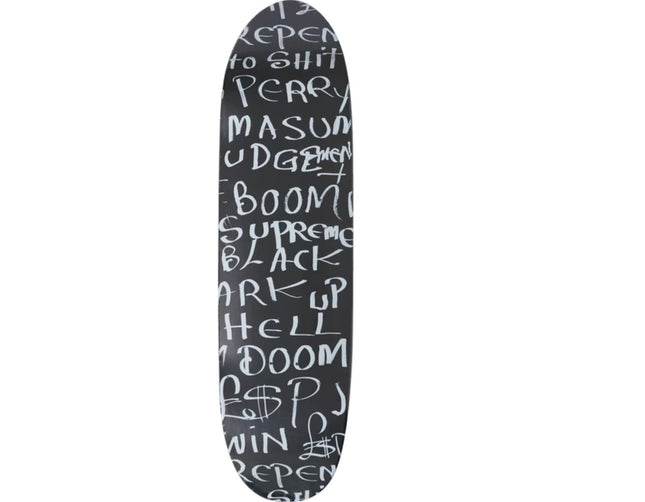
Supreme Lee Scratch Perry Black Ark Cruiser Black Skateboard Art Deck by Supreme
Lee Scratch Perry Black Ark Cruiser- Black Limited Edition Skateboard deck art by Designer Brand Supreme x Lee Scratch Perry. Supreme and Jamaican record producer Lee Scratch Perry have teamed up for another collaboration. The Supreme x Lee Scratch Perry Black Ark Cruiser Deck released during Week 8 of the Supreme FW20 season on October 15th, 2020
$206.00
-
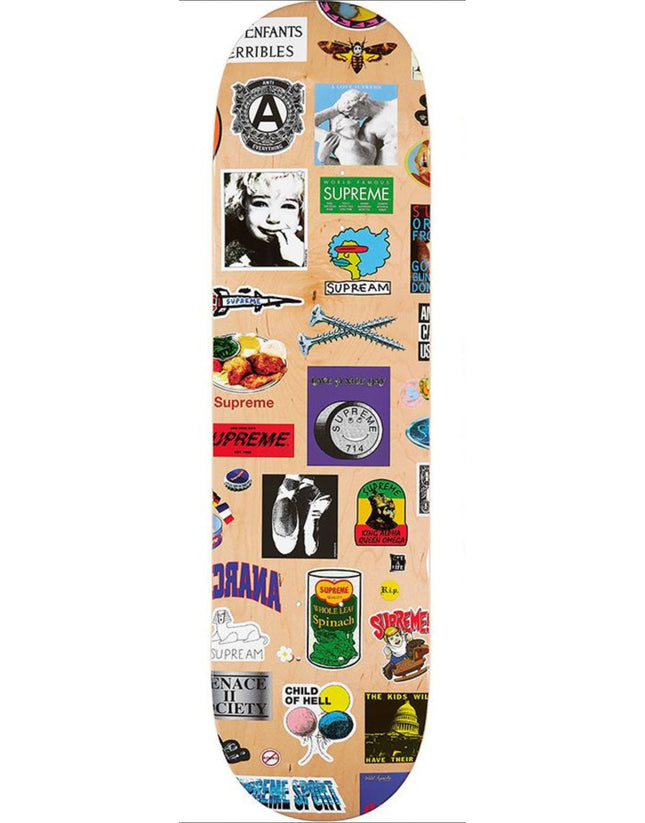
Supreme Stickers Tan Skateboard Art Deck by Supreme
Stickers- Tan Deck Fine Art Limited Edition Archival Pigment Print Transfer on Cold Pressed Steep Natural Skateboard Deck by Street Artwork Graffiti Artist Supreme. 2021 Limited Edition
$198.00
-
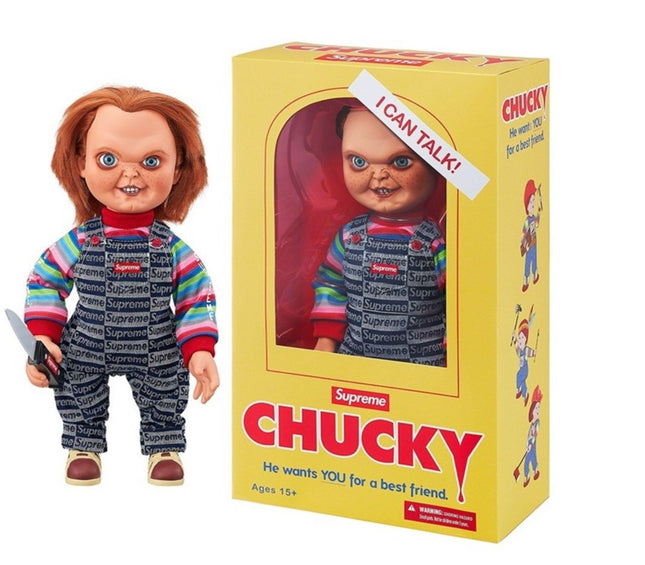
Supreme Chucky Doll Art Object Toy by Supreme
Supreme Chucky Doll Limited Edition Cloth Art Toy Collectible Artwork by street graffiti artist Supreme. The Supreme Chucky Doll, potentially the brand's spookiest accessory ever, dropped on December 17th, 2020, as a part of their FW20 Week 17 release. This Supreme doll marks the third cuddleable toy that the brand has released in the last few years. This Supreme Chucky Doll is as close to the real character as it gets and features the ability to talk as well as a plastic knife. With a branded pair of overalls and a t-shirt, your Supreme Chucky Doll can be just as fly as you are.
$631.00
-
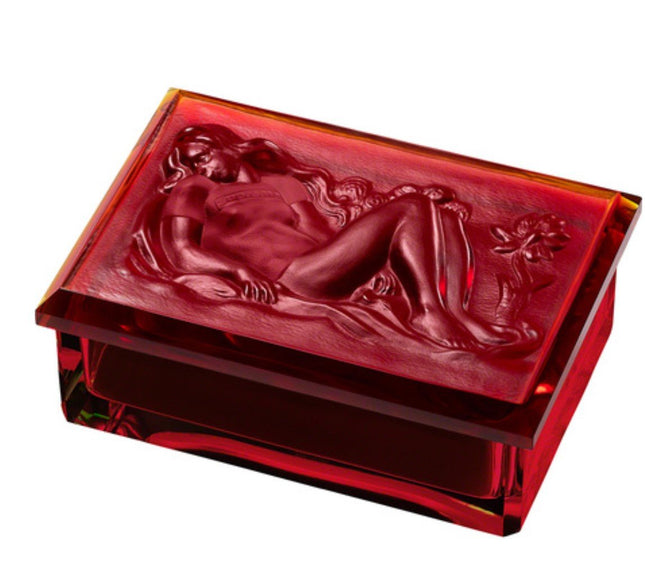
Supreme Halama Crystal Box Red Art Object by Supreme
Supreme Halama Crystal Box- Red Limited Edition Glass Artwork Object Art by Legendary Glassblower Artist Supreme x Halama. 2021 Hand-ground and polished crystal box. 2.17" x 5.71" x 3.94". Made exclusively for Supreme.
$450.00
-
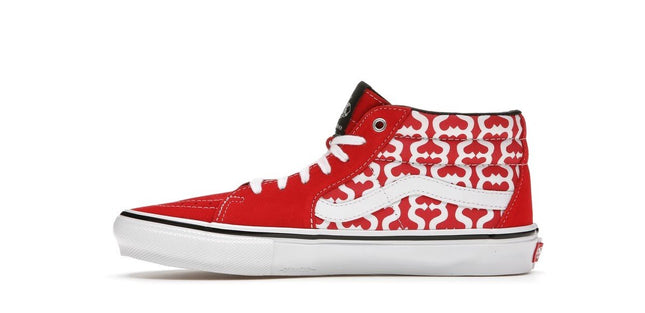
Supreme Skate Grosso Mid-Monogram S Logo Red Size 12 by Supreme x Vans Shoes
New Supreme x Vans Skate Grosso Mid-Monogram S Logo Red Size 12 Shoe Rare Limited Edition Sneaker Artwork Collectible. 2021 New In Box Never Worn Size 12 Supreme x Vans Crossover Fashion Shoe Skate Grosso Mid-Monogram S Logo Red Size 12 by Supreme x Vans Shoes
$217.00
-
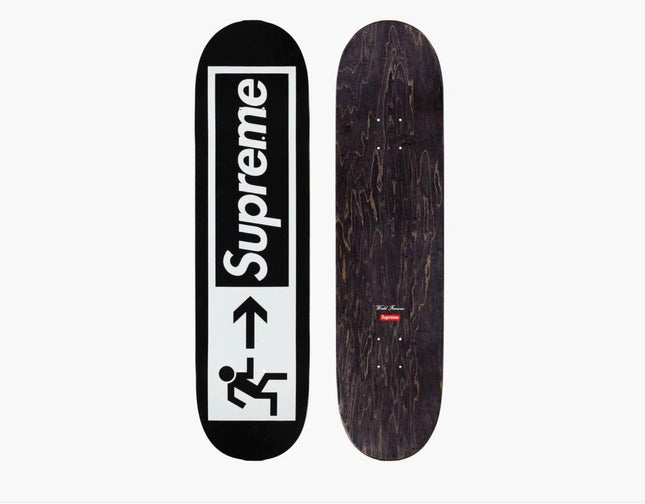
Supreme Exit Black Skateboard Art Deck by Supreme
Supreme Exit- Black Deck Fine Art Limited Edition Archival Pigment Print Transfer on Cold Pressed Steep Natural Skateboard Deck by Street Artwork Graffiti Artist Supreme. Released in March of 2021 as a part of Supreme's SS21 season, the Supreme Exit Skateboard was a hit with skaters and collectors alike. The deck features the classic Supreme box logo alongside a running person image, typically associated with an exit sign.
$198.00
-
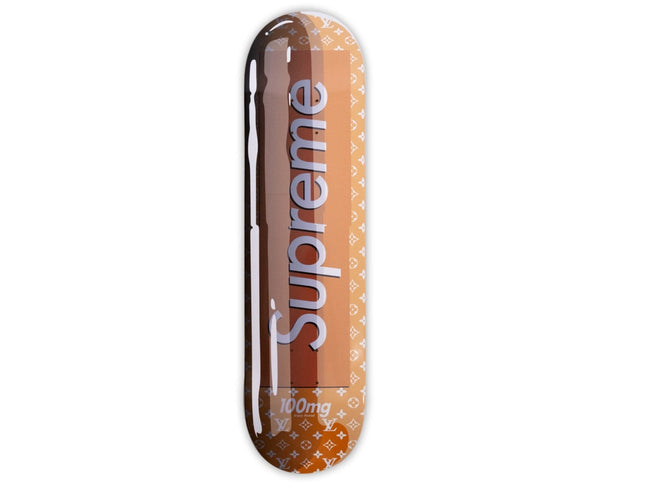
Denial- Daniel Bombardier Supreme Vuitton Smashup Pill Orange Skateboard Deck by Denial- Daniel Bombardier
Supreme Vuitton Smashup Pill- Orange Deck Fine Art Limited Edition Archival Pigment Print Transfer on Cold Pressed Steep Natural Skateboard Deck by Street Artwork Graffiti Artist Denial. 2022 Numbered Limited Edition of 25 Skateboard Artwork Size 8.25x31.87 Naturally, the artist has evolved as one the most prominent figures of contemporary pop artists, who nonetheless, continues to stay relevant and is interested in generating thought-provoking commentary. He has a long history of exploring the boundaries of appropriation, which he uses as a means of subverting the value of cultural products, imprinted in the collective memory of the Western civilization. His work, in other words, is inviting the viewer to re-imagine our dystopian society as a way of confronting it, with humor and irony as the biggest tools of the artist.
$676.00
-
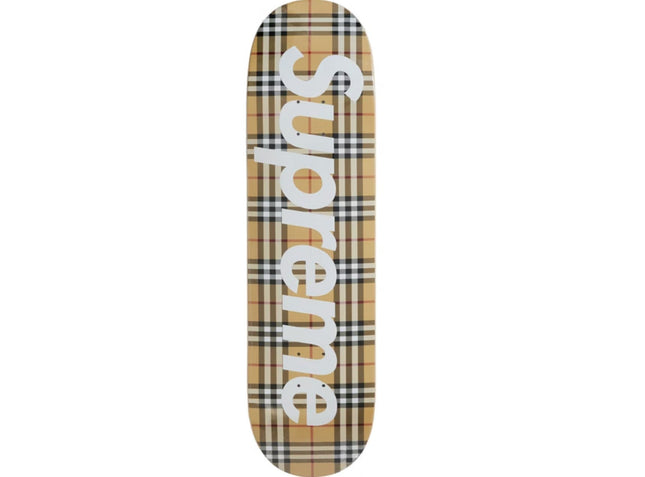
Supreme Supreme Burberry Beige Skateboard Art Deck by Supreme
Supreme Burberry Skateboard Deck- Beige Limited Edition Skateboard deck art by Designer Brand Supreme x Burberry SS22 2022 In March of 2022, Supreme linked up with fashion house Burberry for a highly-anticipated collaboration. The collection included dozens of hot items like box logo tees and hoodies. Among the most sought-after items were was this Supreme Burberry Skateboard Deck Beige, which features the iconic Burberry plaid pattern on a classic Supreme box logo skateboard. Goes without saying, but this skate deck sold out in an instant during the drop and has since become a coveted collector's item. The Supreme Burberry Skateboard Deck Beige was released on March 10th, 2022
$359.00
-
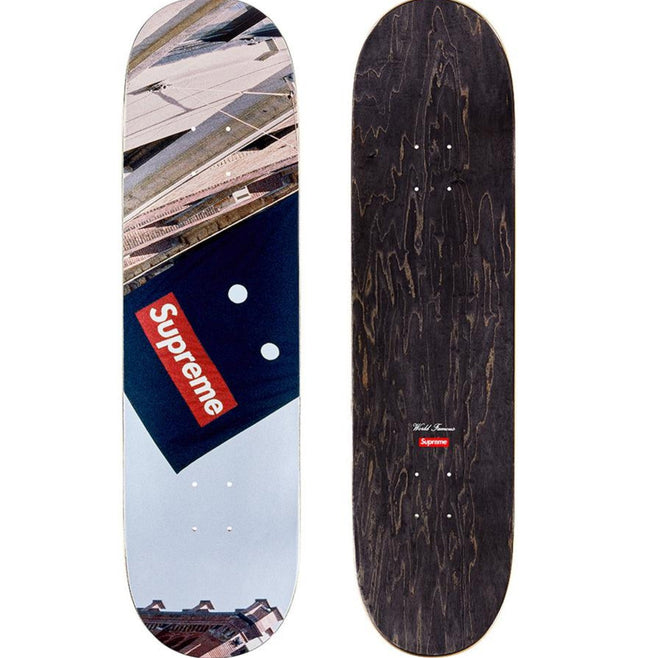
Supreme Banner Skateboard Art Deck by Supreme
Supreme Banner Deck Limited Edition Skateboard deck art by Designer Brand Supreme FW19 2019 Released as a part of Supreme's Fall/ Winter 2019 Week 1 drop, the Supreme Banner Skateboard shares a graphic deck features the same graphic image, a photograph of Supreme's original store banner. The Supreme Banner Skateboard released on August 22nd, 2019
$233.00
-
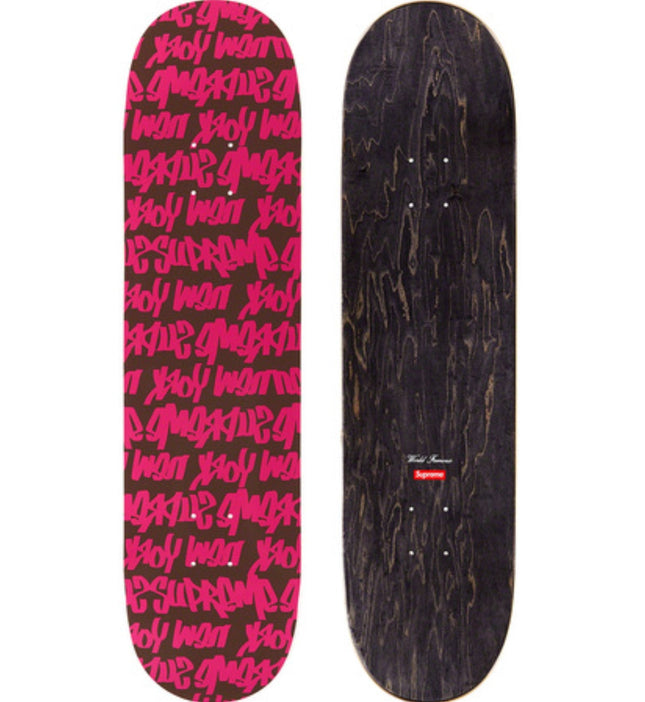
Supreme Fat Tip Brown Skateboard Art Deck by Supreme
Fat Tip Deck- Brown Limited Edition Skateboard deck art by Designer Brand Supreme FW22 2022 Supreme skate deck with natural veneer and blacktop ply. Printed logo pattern on bottom with printed World Famous and box logo on top.
$233.00
-
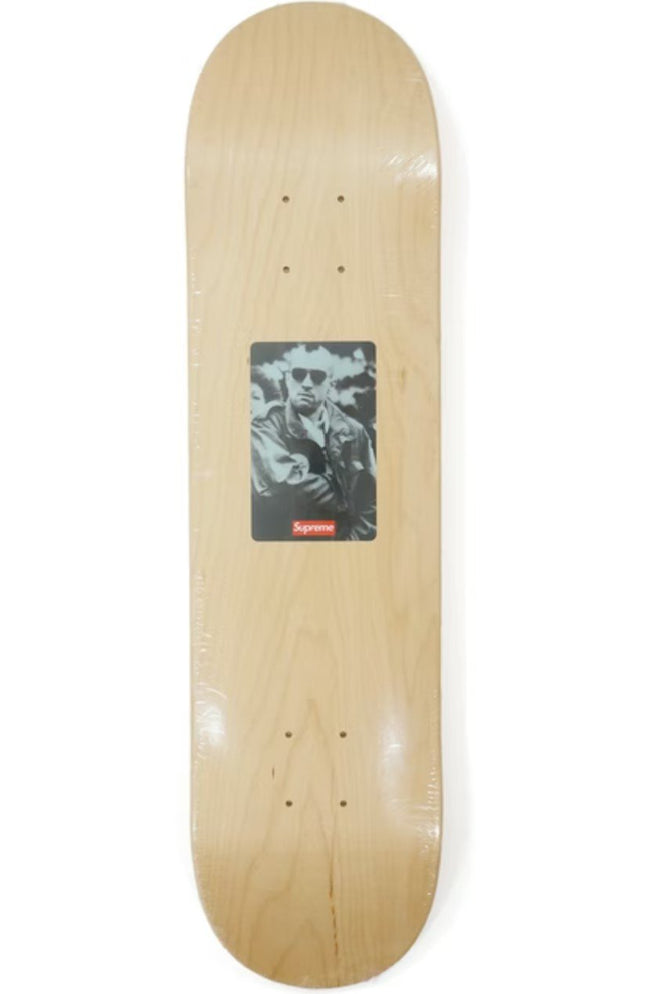
Supreme 20th Anniversary Taxi Driver Natural Skateboard Art Deck by Supreme
Supreme 20th Anniversary Taxi Driver Deck- Natural Fine Art Limited Edition Archival Pigment Print Transfer on Natural Veneer Wood Skateboard Deck by Street Artwork Graffiti Artists at Supreme. 2014 Widely considered one of Robert De Niro's best performances, Taxi Driver was released long before Supreme opened for business in 1994. That didn't stop them from including a stark image of Travis Bickle on one of their first t-shirt's, which eventually made its way onto skateboards in Supreme's 20th Anniversary collection that dropped in April 2014. This natural version features an a clear wood stain on the bottom and includes a Supreme 20th Anniversary seal printed on the top.
$298.00
-
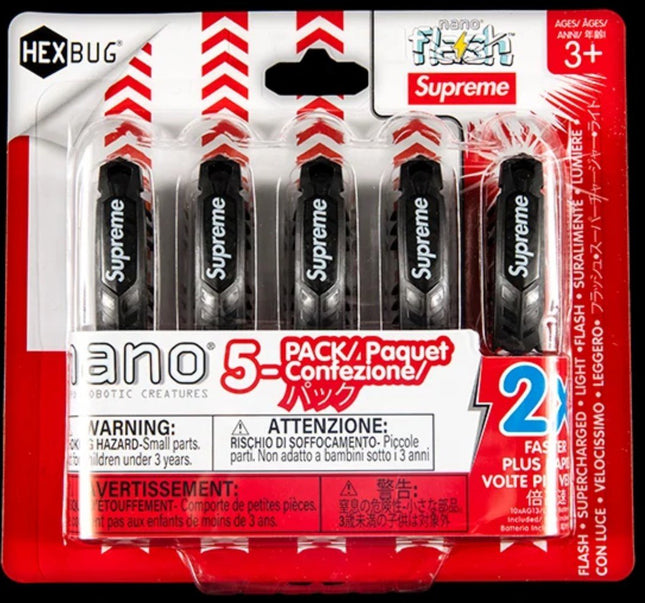
Supreme Hexbug Nano Flash 5 Pack Black Art Object Toy by Supreme
Supreme Hexbug Nano Flash 5 Pack- Black Limited Edition Designer Art Toy Collectible Artwork by street graffiti artist Supreme. Black 2021 FW21
$140.00
-
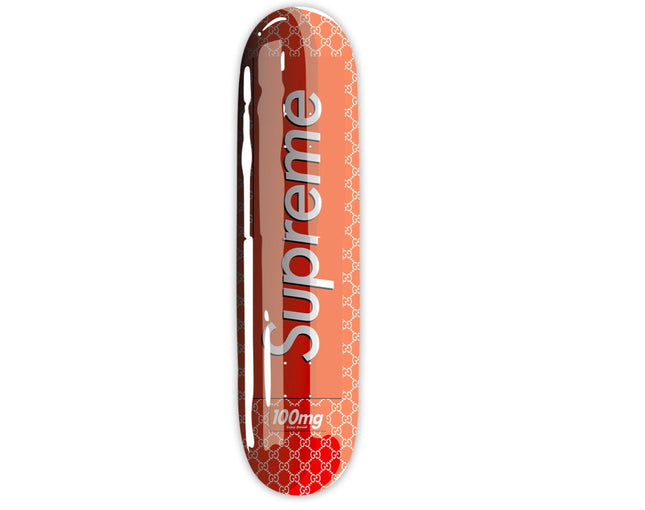
Denial- Daniel Bombardier Supreme Gucci Smashup Pill Red Skateboard Deck by Denial- Daniel Bombardier
Supreme Gucci Smashup Pill- Red Fine Art Limited Edition Archival Pigment Print Transfer on Cold Pressed Steep Natural Skateboard Deck by Street Artwork Graffiti Artist Denial- Daniel Bombardier. 2022 Numbered Limited Edition of 100 Skateboard Artwork Size 8.25x32 Archival Pigment Print Transfer on Cold Pressed Steep Natural Skate Deck Size: 8.25 x 31.875 Inches Release: June 28, 2022 From the Gucci logo, Louis Vuitton & Supreme to Channel perfumes and credit cards, he is utilizing such cultural products with the intention to make a statement against the system, which gave birth to them. As a result, he re-contextualizes them and transforms them from commercial products to his cultural legacy.
$466.00
-
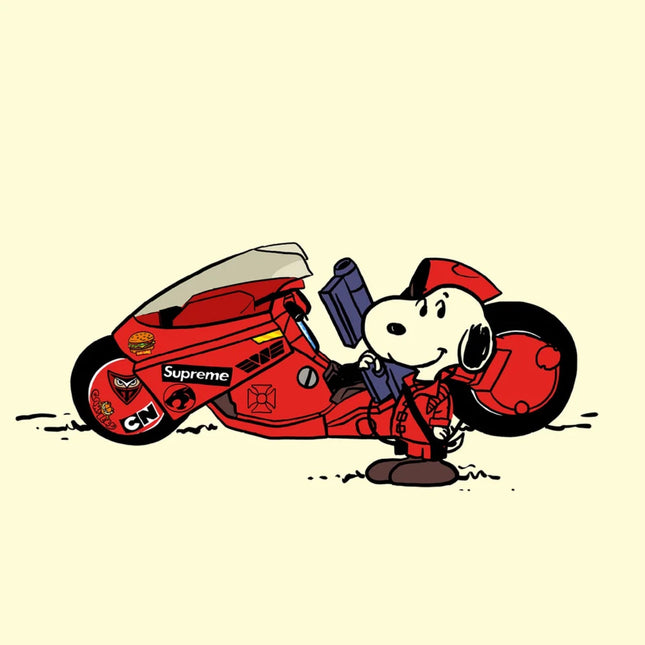
Raid71 The Gang Is Here Charlie Akira Giclee Print by Raid71
The Gang Is Here Charlie- Akira Artwork Giclee Limited Edition Print on Fine Art Paper by Pop Culture Artist Raid71. 2022 Signed Limited Edition of 210 Artwork Size 5x5 Print
$134.00
-
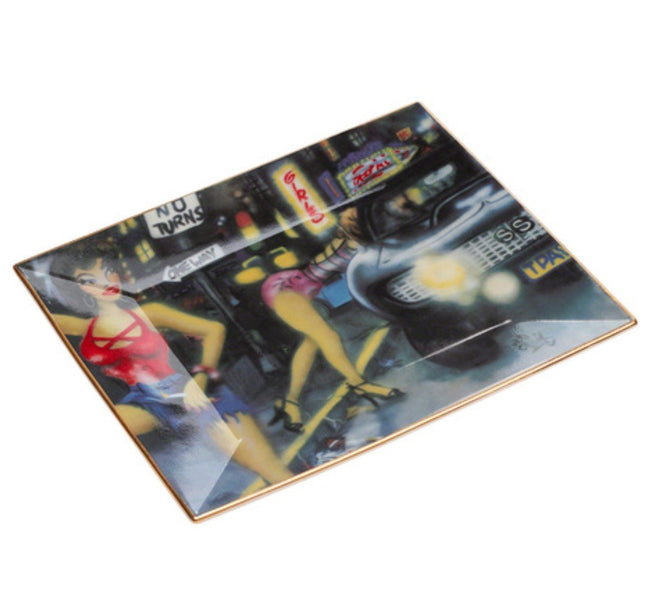
Lady Pink Super Sport Camaro Supreme Tray Art Object by Lady Pink
Super Sport Camaro Supreme Tray Limited Edition Porcelain Art Glass Collectible Plate Artwork by OG Street Graffiti Artist Lady Pink. 2021 Lady Pink/Supreme Tray - Super Sport Camero - Shop - Supreme. Porcelain tray with printed graphic and printed logo on bottom. 5.9 x 7.1
$221.00
-
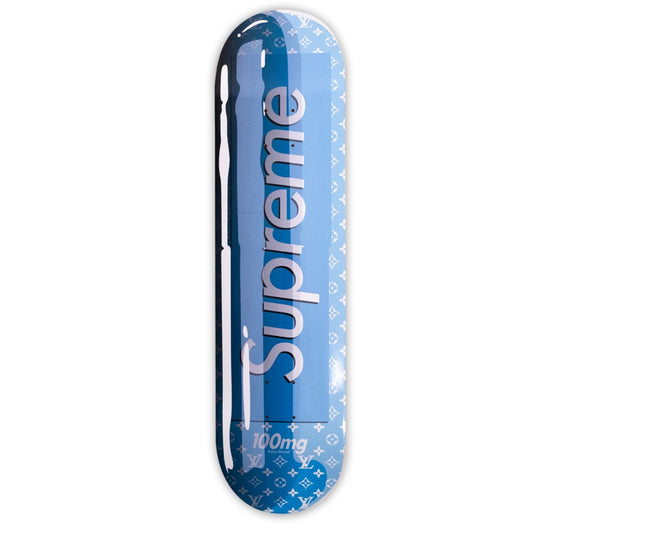
Denial- Daniel Bombardier Supreme Vuitton Smashup Pill Blue Skateboard Deck by Denial- Daniel Bombardier
Supreme Vuitton Smashup Pill- Blue Deck Fine Art Limited Edition Archival Pigment Print Transfer on Cold Pressed Steep Natural Skateboard Deck by Street Artwork Graffiti Artist Denial. 2022 Numbered Limited Edition of 75 Skateboard Artwork Size 8.25x31.87 Naturally, the artist has evolved as one the most prominent figures of contemporary pop artists, who nonetheless, continues to stay relevant and is interested in generating thought-provoking commentary. He has a long history of exploring the boundaries of appropriation, which he uses as a means of subverting the value of cultural products, imprinted in the collective memory of the Western civilization. His work, in other words, is inviting the viewer to re-imagine our dystopian society as a way of confronting it, with humor and irony as the biggest tools of the artist.
$505.00
-
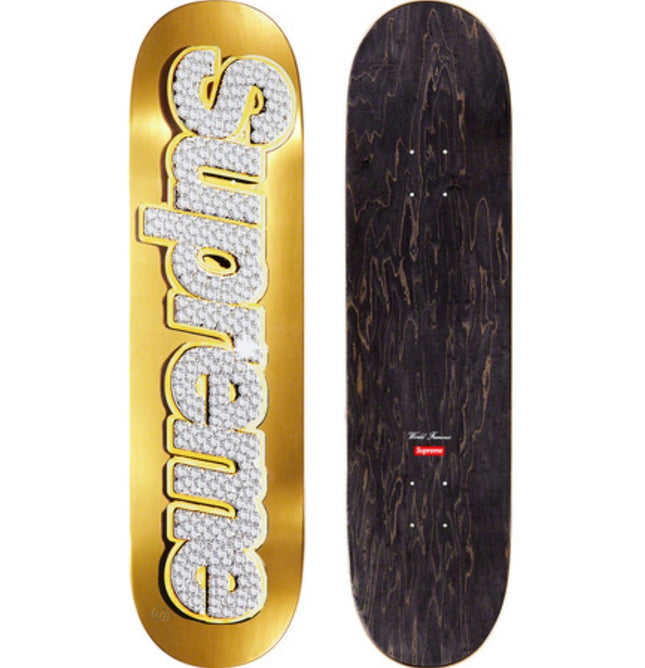
Supreme Bling Box Logo Gold Skateboard Art Deck by Supreme
Bling Box Logo Deck- Gold Limited Edition Skateboard deck art by Designer Brand Supreme FW22 2022 Supreme skate deck with natural veneer and black top ply. Printed logo on bottom with printed World Famous and box logo on top.
$233.00
-
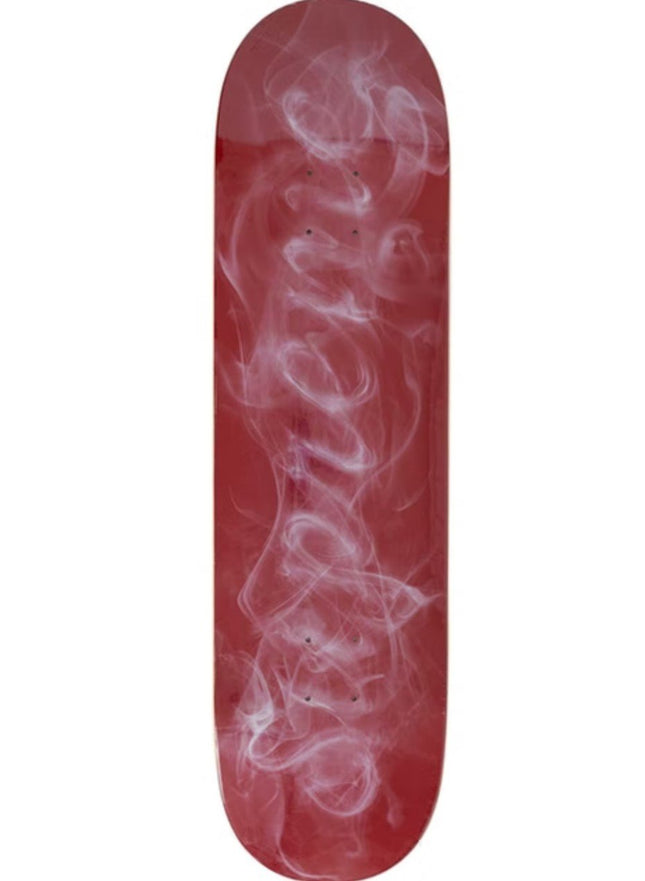
Supreme Smoke Red Skateboard Art Deck by Supreme
Supreme Smoke Deck- Red Limited Edition Skateboard deck art by Designer Brand Supreme FW19 2019- Smoke Supreme Logo Skateboard released on August 22nd, 2019. The design features a white smoke pattern spelling out the Supreme brand name on a contrasting background.
$289.00
-
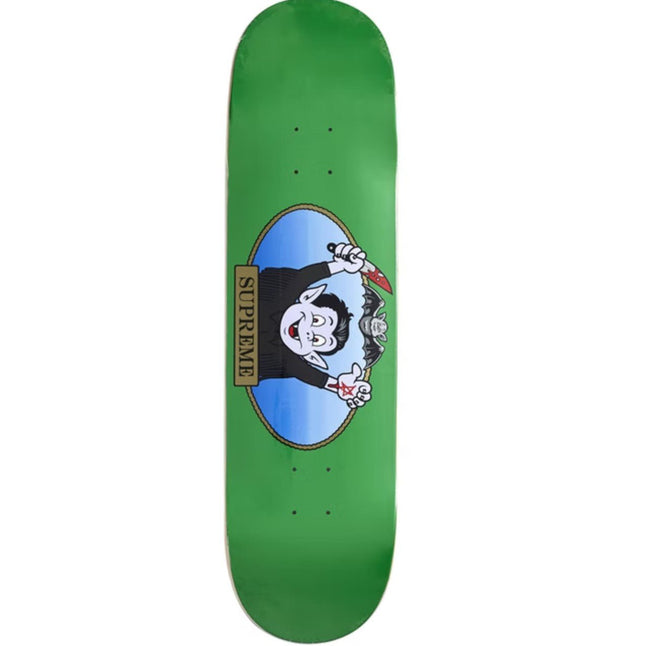
Supreme Vampire Boy Green Skateboard Art Deck by Supreme
Supreme Vampire Boy Deck- Green Limited Edition Skateboard deck art by Designer Brand Supreme SS21 2021 Supreme Dracula Bat Skateboard Deck
$206.00
-
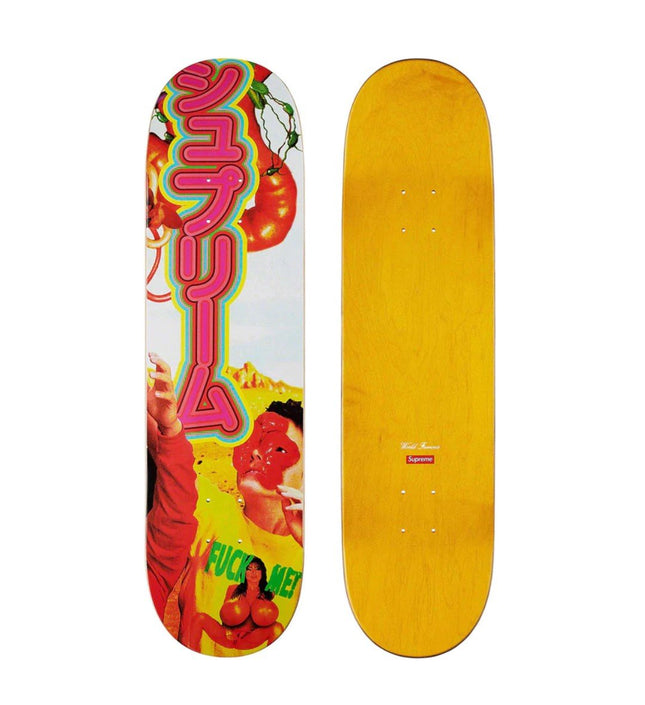
Supreme Sekintani La Norihiro Yellow Skateboard Art Deck by Supreme
Supreme Sekintani La Norihiro Deck- Yellow Limited Edition Skateboard deck art by Designer Brand Supreme SS19 2019 Japanese artist Sekintani La Norihiro’s artwork is known for its provocative imagery, often portraying distorted images, organs, and bright color combinations to portray almost stomach-turning motifs. The Supreme Sekantani La Norihiro Skateboard Deck Pink showcases La Norihiro’s artwork on a Supreme skate deck. The deck depicts a partially naked woman and a devil-like figure looking over her. Distorted motifs are evident throughout the underside of the deck in line with La Norihiro’s style. The Supreme Sekantani La Norihiro Skateboard Deck Pink was released during Spring/Summer 2019
$233.00
-
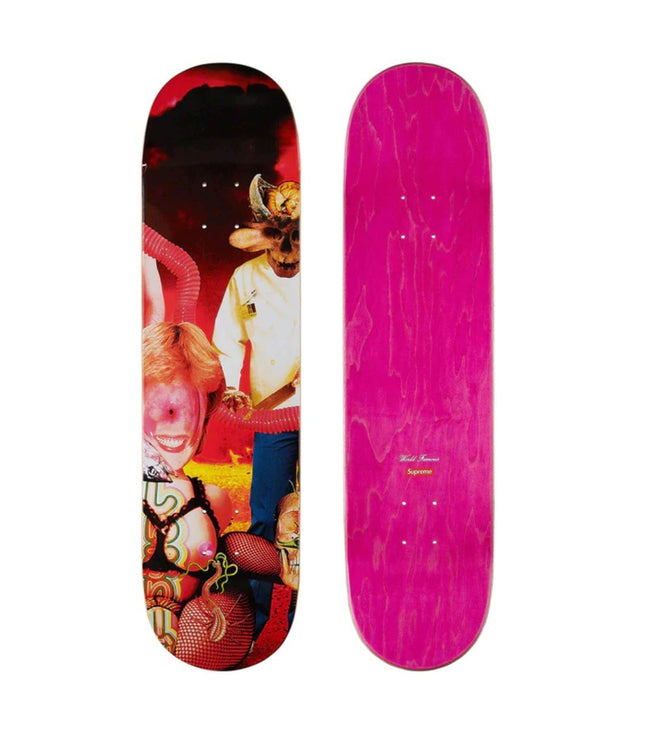
Supreme Sekintani La Norihiro Pink Skateboard Art Deck by Supreme
Supreme Sekintani La Norihiro Deck- Pink Limited Edition Skateboard deck art by Designer Brand Supreme SS19 2019 Japanese artist Sekintani La Norihiro’s artwork is known for its provocative imagery, often portraying distorted images, organs, and bright color combinations to portray almost stomach-turning motifs. The Supreme Sekantani La Norihiro Skateboard Deck Pink showcases La Norihiro’s artwork on a Supreme skate deck. The deck depicts a partially naked woman and a devil-like figure looking over her. Distorted motifs are evident throughout the underside of the deck in line with La Norihiro’s style. The Supreme Sekantani La Norihiro Skateboard Deck Pink was released during Spring/Summer 2019
$233.00
-
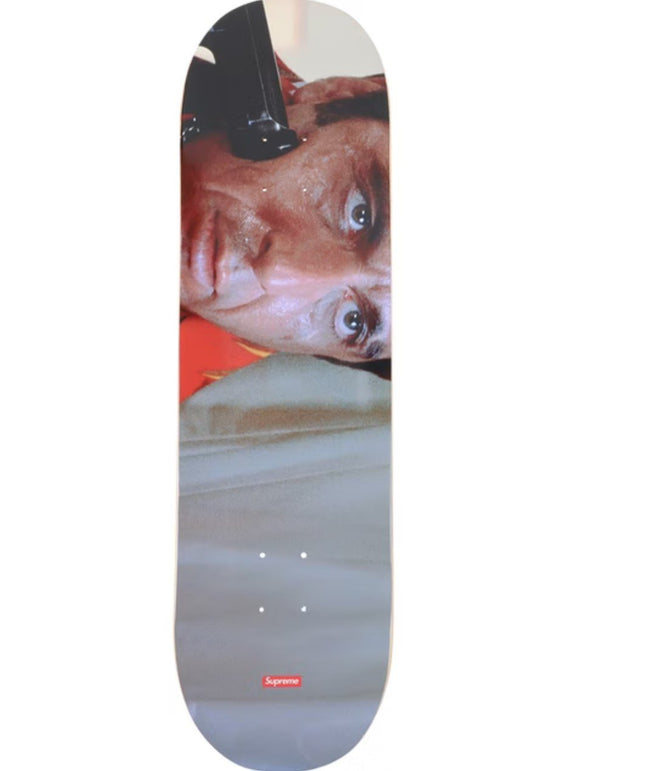
Supreme Scarface Shower Skateboard Art Deck by Supreme
Supreme Scarface Shower Deck Limited Edition Skateboard deck art by Designer Brand Supreme FW17 2017 Supreme x Scarface's iconic imagery was utilized for a full collection of items during the Fall/Winter 2017 collection. Each deck includes the film's famous tagline printed on the top of the deck. This "Shower" deck grabs a still from the infamous scene where a drug deal goes wrong, and Montana is forced into the shower with a gun to his head.
$470.00
-
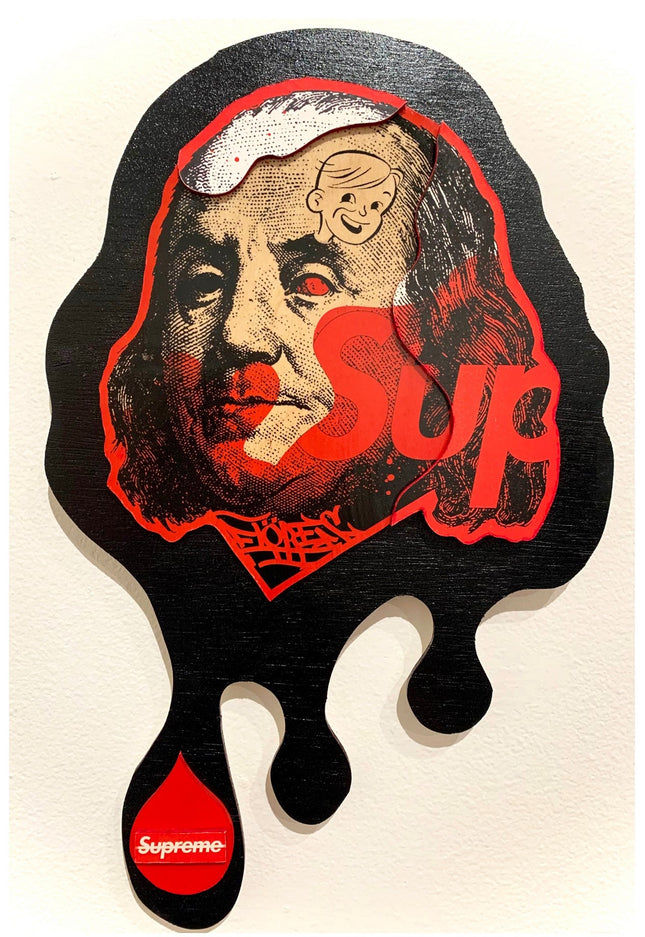
Peter Van Flores Supreme Drip Original Spray Paint Collage Painting by Peter Van Flores
Supreme Drip Original One of a Kind Wheatpasters, Ink & Spray Paint Painting Artwork on Layered Wood by Popular Street Graffiti Artist Peter Van Flores. 2022 Signed Original SUPREME Drip Wood Cut A homage to SUPREME. Ink, Spraypaint, and wheatpaste on several layers of hand cut wood. 1 of 1 original. Medium in size. Unique dimensions with curves. Supreme Drip Original Spray Paint Collage Painting by Peter Van Flores
$901.00
-
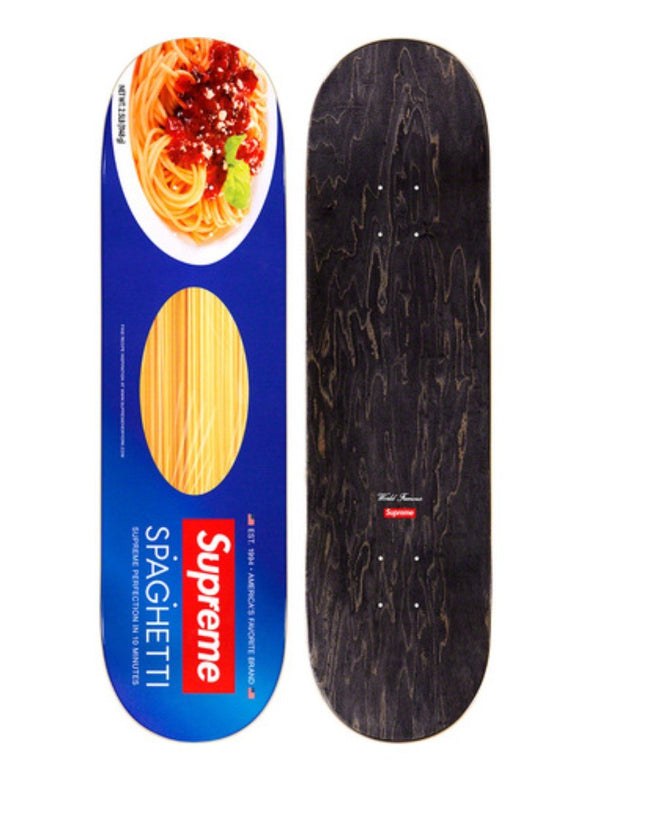
Supreme Spaghetti Skateboard Blue Skateboard Art Deck by Supreme
Spaghetti Skateboard- Blue Deck Fine Art Limited Edition Archival Pigment Print Transfer on Natural Veneer Wood Skateboard Deck by Street Artwork Graffiti Artists at Supreme. 2021 Spaghetti Skateboard- Blue 8.375" x 32.125" Supreme skate deck with natural veneer and black top ply. Printed graphic on the bottom with printed World Famous and box logo on top.
$206.00
-
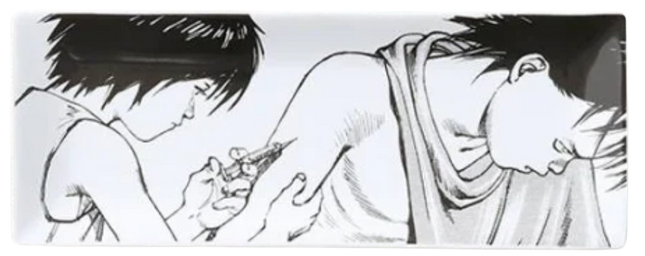
Supreme Akira Syringe Ceramic Plate Tray Art Object by Supreme
Akira Syringe Ceramic Plate Tray Art Object by Supreme Limited Edition Collectors Dish Artwork. 2017 Stamped Limited Edition Supreme Ceramic Tray Plate Artwork Size 11.25x4.25 Collectible Art Object. Supreme AKIRA Syringe Ceramic Tray: A Cult Classic Revived in Porcelain The Supreme AKIRA Syringe Ceramic Tray stands as a cultural artifact that weaves together the rawness of street pop art with the meticulous detail of manga illustrations. Released as a highly anticipated part of the Fall/Winter 2017 collection, this limited-edition tray encapsulates the edgy essence of the Supreme brand while paying homage to the trailblazing Japanese manga AKIRA. Crafted with precision, the white ceramic tray is a testament to the enduring influence of the manga series and the ingenious adaptability of Supreme's streetwear aesthetic. The tray, measuring 11.25 inches by 4.25 inches, is a canvas that brings the stark black-and-white world of AKIRA's neo-Tokyo into the tangible realm. It features an intense scene directly lifted from the pages of the manga, depicting the characters Kaneda and Tetsuo in a moment fraught with tension, where Tetsuo is administered an injection. This scene is a pivotal point in the AKIRA series and a snapshot of the intricate and action-packed storytelling that has captivated fans for decades. Ceramic Artistry Meets Iconic Graphic Storytelling The synergy of Supreme's branding and AKIRA's graphic artwork on the Supreme AKIRA Syringe Ceramic Tray is a striking example of how street pop art can merge with other media to create something new yet familiar. Supreme's subtle insertion of its name onto the syringe in the artwork exhibits a clever interplay between brand identity and narrative imagery. This detail, while minor, is a deliberate nod to the collaborative nature of the piece and signifies a merging of worlds that both Supreme and AKIRA fans can appreciate. Beneath the tray lies the iconic Supreme box logo, a signature that asserts the item's authenticity and ties it back to the lineage of Supreme's previous collectible items. This emblem, juxtaposed with the manga artwork, bridges the cultural zeitgeist of modern streetwear with the classic artistry of Japanese manga. The logo's presence is a pledge of quality and a symbol that resonates with collectors who understand the worth of limited-edition street pop art. Impact and Collectibility of the Supreme AKIRA Syringe Tray The Supreme AKIRA Syringe Ceramic Tray is more than a mere decorative piece; it's a slice of pop culture history molded from ceramic. The decision to immortalize this particular manga scene in the form of a high-quality tray demonstrates a nuanced understanding of the collector's mindset—it is not merely the object of value but the convergence of art, narrative, and brand that makes it a treasure. As a collectible, the tray commands attention, serving as a focal point that ignites conversations about street pop art, its intersections with other forms of media, and the very nature of contemporary collectibles. In street pop art and graffiti artwork, objects like the Supreme AKIRA Syringe Ceramic Tray underscore the potential of everyday items to serve as canvases for storytelling and artistry. The striking depiction of Kaneda and Tetsuo is a visual narrative frozen in porcelain, lending the tray a dynamism often associated with street art's immediacy and graffiti's transgressive vibrancy. Yet, the ceramic medium's permanence and the AKIRA storyline's timeless allure elevate this tray beyond the brief, cementing its status as a coveted piece of art. A Fusion of Art Forms for the Contemporary Collector Collectors and fans of manga and streetwear find an object that encapsulates the essence of both worlds in the Supreme AKIRA Syringe Ceramic Tray. The harmonious fusion of Supreme's street-savvy branding with AKIRA's arresting visuals positions this tray as an emblematic piece within the collector's milieu. As a functional item, it stands ready to serve; as an artwork, it demands to be contemplated. The Supreme AKIRA Syringe Ceramic Tray is a testament to the power of collaboration between brands and artists and a mirror reflecting the state of street pop art and graffiti artwork today—an ever-evolving, always surprising, and unapologetically bold field.
$243.00
-
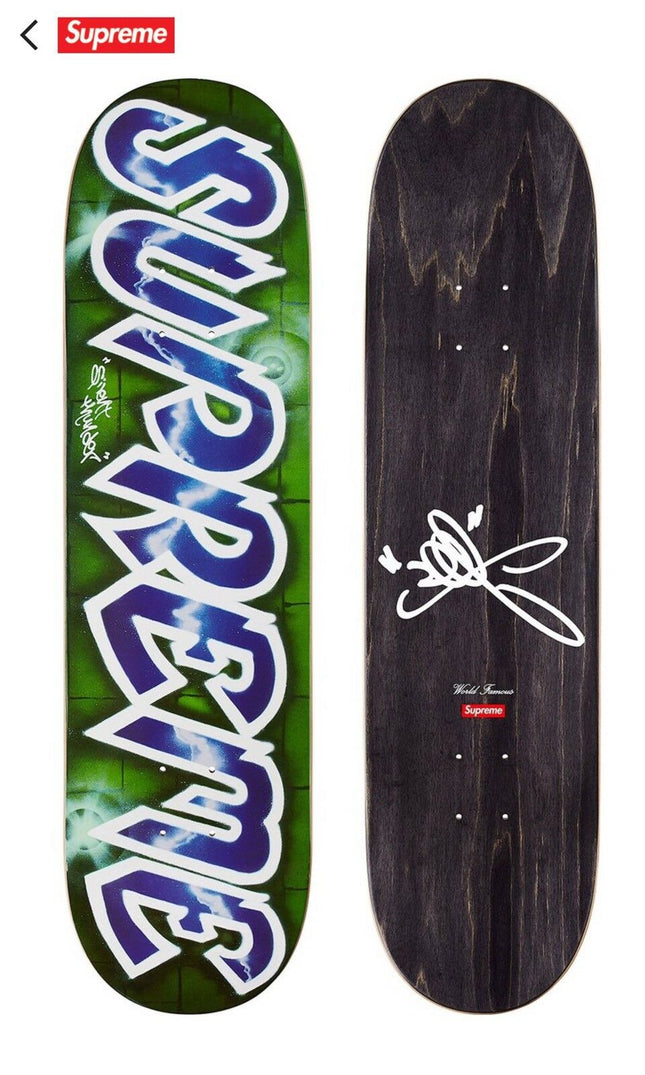
Lee Quiñones Lee Quinones Logo Blue Skateboard Art Deck by Supreme
Lee Quinones Logo Deck- Blue Limited Edition Silkscreen Skateboard deck art by street pop culture artist Supreme. 2018 The Supreme x Lee Logo Skateboard highlights the work of Puerto Rican artist and "Wild Style" actor Lee Quiñones in a commemorative collection from the Spring/Summer 2018 range. Lee has originally known for his 1970s NYC subway graffiti art, which inspired this deck. The top features Quiñones' printed signature in white, while the bottom showcases a "Supreme" graffiti piece in blue, white, and black, with a green subway tile background and "Silent thunder" painted in white. Puerto Rican actor and artist Lee Quinones originally gained fame as a subway graffiti artist in New York City during the 1970s. Throughout the Spring/Summer 2018 season, Supreme released a handful of items featuring the artwork of Lee Quinones including hoodies, jackets, shorts, pants, and this Blue skate deck. The deck showcases an example of his famous subway-style art, with the word Supreme in blue font on a green background. The top of the deck includes Quinones' printed signature, making it perfect for hanging in your crib however you see fit.
$206.00

